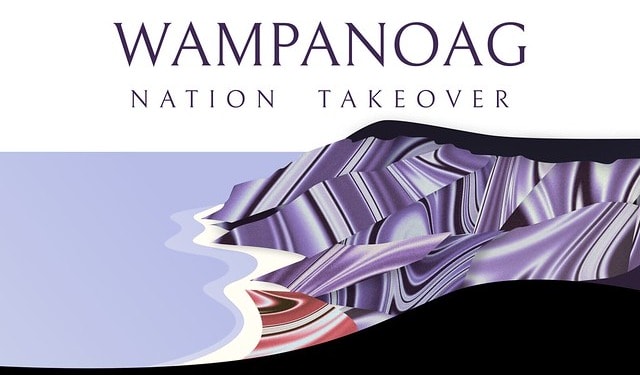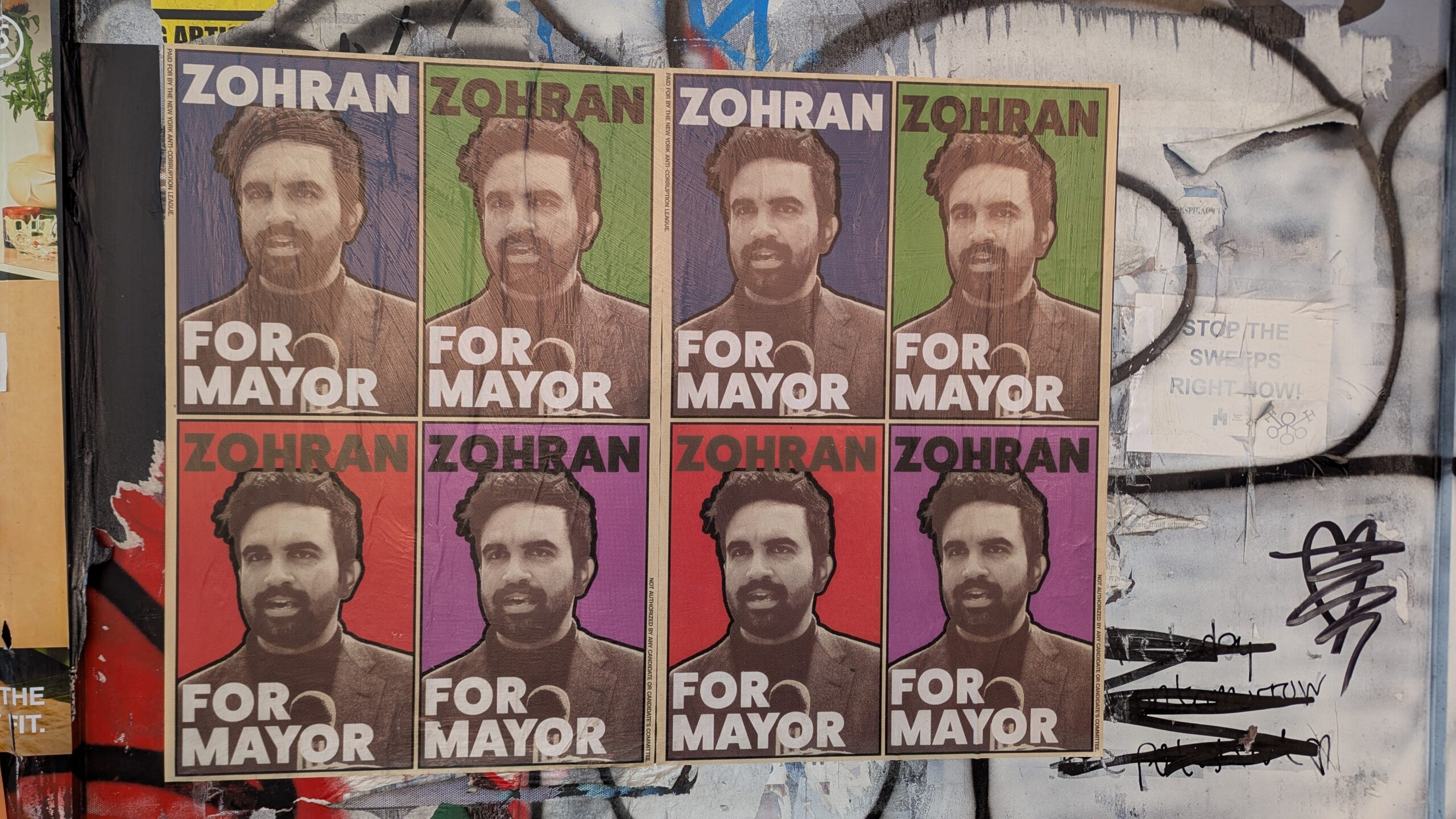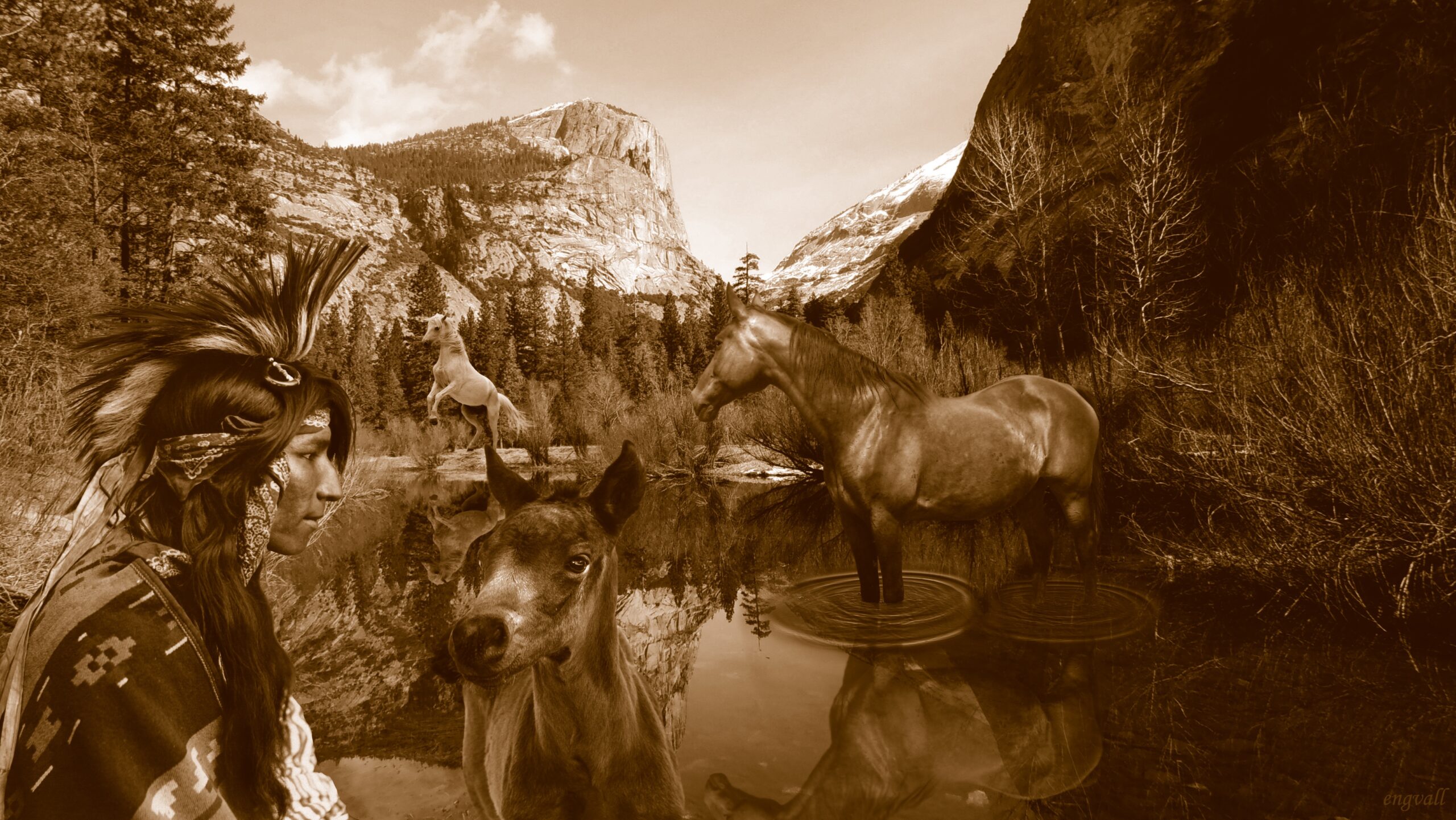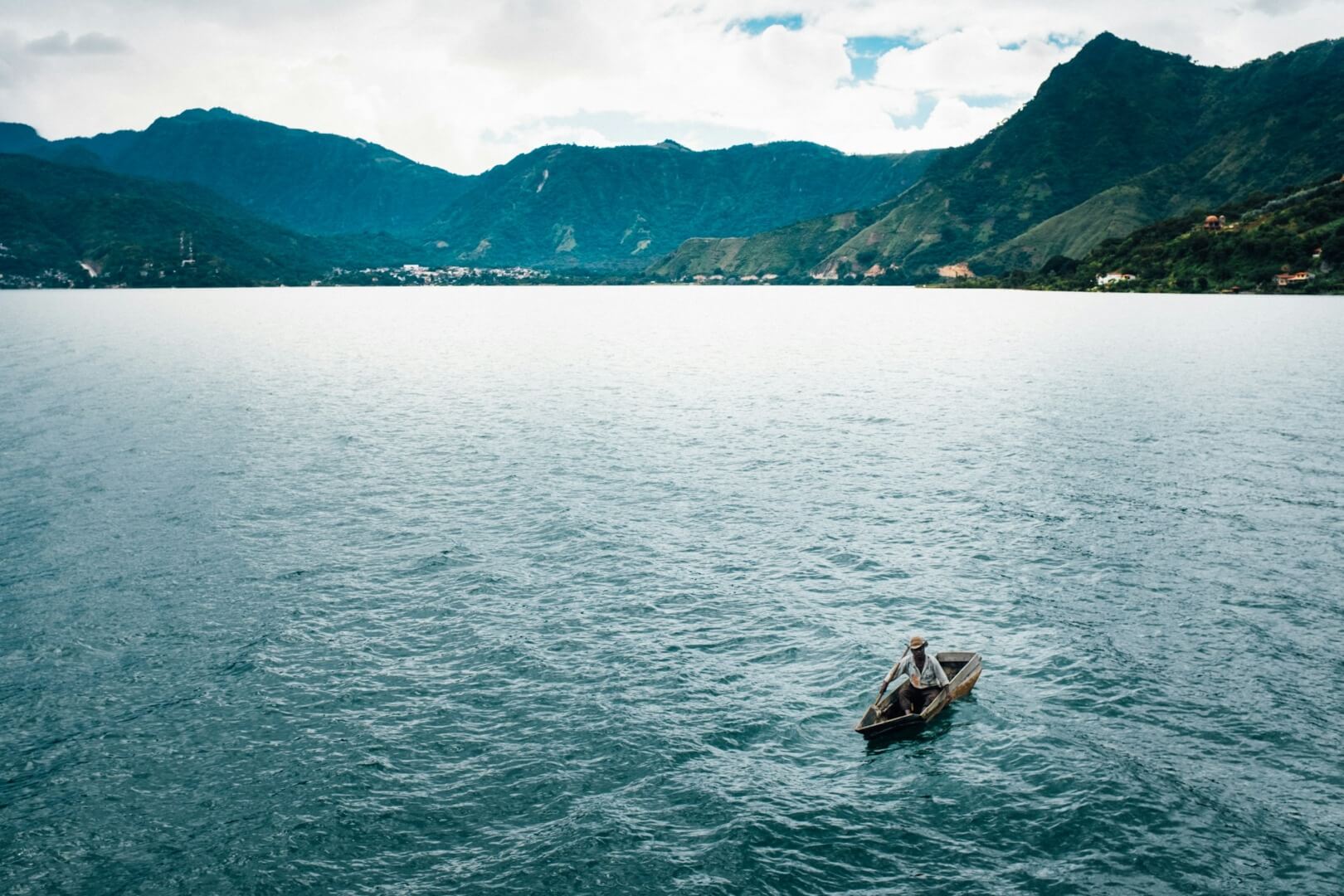When you think of the “Mayflower,” what comes to mind? For many it might be: the Pilgrim Fathers, Thanksgiving, Plymouth Rock or the “New World.” However, for the Wampanoag people whose shores the Mayflower docked at in 1620, quite different associations arise.
“Among the Wampanoag and Indigenous people of this country, Mayflower conjures up different emotions. The ship did not land in a new world; but in fact, a very old world … For 400 years, the Mayflower narrative has favoured the glory of the pilgrims and marginalised the Wampanoag truth,” says Paula Peters, member of the Mashpee Wampanoag Tribe, writer, journalist, filmmaker and founder of the Native American creative agency, SmokeSygnals.
http://www.youtube.com/watch?v=9z6mnN8zyIU&t=5s&ab_channel=Mayflower400UK
Certainly it is difficult for many of us to look beyond the initial associations listed when the cultural narrative embedded in our monuments, postcodes and street names – from “Drake Circus,” on “Charles Street” here in Plymouth, the UK, to “Pilgrim Hall Museum” in “Plymouth County,” “New England,” the US – is insistent on telling us a one-sided, mythologised version of the Europeans’ arrival at the Wampanoag Nation’s shores.
However, back in April, after 403 years, this acutely skewed cultural and historical narrative was finally given some vital equilibrium as members of the Wampanoag Nation, descendents of the first people that the pilgrims encountered on American shores, travelled to Plymouth, UK, to lead the “Wampanoag Nation Takeover” of the Theatre Royal Plymouth.
 In the Photo: Theatre Royal Plymouth Wampanoag Nation Takeover sign. Photo credit: Clare Dawson (article author).
In the Photo: Theatre Royal Plymouth Wampanoag Nation Takeover sign. Photo credit: Clare Dawson (article author).
On April 22, people of the Wampanoag Nation, including Mashpee, Aquinnah and Herring Pond tribal members and also a member of the Nipmuc Nation, gathered at the Mayflower Steps in Plymouth to be met by the city’s Lord Mayor, Sue Dann, proudly displaying their Nation’s flag, marking the beginning of a new narrative – one of truth, pride and justice.
Their flag. Their story.
A moment of remarkable cultural and historical significance today.
Arriving in Plymouth UK earlier today, the people of the Wampanoag Nation displayed their flag in front of the Mayflower Steps. pic.twitter.com/D9zwwO47C6
— Mayflower 400 UK (@mayflower400uk) April 22, 2023
The Wampanoag: People of the First Light
The Wampanoag flag brings to mind the meaning of the Nation’s name, which in English translates to “People of the first light,” evoking the over 15,000 years that the Wampanoag have inhabited their area of the Earth, known to them as “Turtle Island.”

In the Photo: We Are The Land program. Photo credit: Clare Dawson (article author).
In 17th century Massachusetts and Eastern Rhode Island, there were around 40,000 Wampanoag people occupying 67 villages, who nurtured a reciprocal relationship with the land as expert hunters, gatherers, fishers and farmers during the warmer months of the year, then moving inland to shelter for the Winter months.
However, the Wampanoag population number has been reduced to about 4,000-5,000 people in the present day, with only 5 federally recognised tribes including Mashpee, Aquinnah, Herring Pond, Assonet and Chappaquiddick as well as approximately 50 other tribal bands across the US and the world.
These tribal bands are deemed “illegitimate” by the US government due to the policy of Federal Recognition, that pits tribes against one other for standing, denying access to funding as well as full sovereign rights as tribes.
The decimation in Wampanoag population numbers began in the late 1500s that saw ships cross the Atlantic from Europe to Wampanoag shores to trade with or enslave the people.
With them, the Europeans brought diseases that the Wampanoag had no immunity to, culminating in the “Great Dying” in 1616-1619 that resulted in a 90% mortality rate in coastal villages who were exposed to the most overseas contact.
It is thought that this, in conjunction with the Wampanoags’ rivalry with the neighbouring Narragansetts, was a significant factor in Massasoit (great leader) Oosameequan establishing a historic peace treaty with the Mayflower passengers that would save the Europeans from starvation, but ultimately, lead to the colonists’ betrayal of the Wampanoags’ kindness.
“Within 50 years, the treaty between Plymouth Colony and the Wampanoag had become useless to Native people who were being oppressed by the same rule of the crown the pilgrims themselves had fled,” says Paula Peters.
In 1662, Oosameequan passed away, succeeded first by his son Wumsutta who was asked to come and pledge loyalty to the crown. He denied that pledge, and mysteriously fell ill and died on his return trip home. The Wampanoag people believe he was poisoned.
Mettacom (known as King Phillip by the English) succeeded Wumsutta who, after some conflicts over the colonists’ push to further encroach on Wampanoag land, led an uprising of Wampanoag, Pocumtuck, Narragansett and Nipmuc tribes against the English in an attempt to quell their swelling colonialism.
King Phillip’s war of 1676 is considered the bloodiest war on American soil, lasting 14 months and devastating the tribes’ populations, setting the stage for accelerated European colonisation.
Wamsutta, also known as Frank James, member of the Aquinnah Wampanoag tribe and Native American activist, wrote in a speech in 1970 to mark the 350th anniversary of the Mayflower’s arrival, revoked by Massachusetts state officials (sparking movements to recognise Thanksgiving as a National Day of Mourning):
“We, the Wampanoag, welcomed you, the white man, with open arms, little knowing that it was the beginning of the end; that before 50 years were to pass, the Wampanoag would no longer be a free people.”
Despite this, the Wampanoag are still here, practising their cultural and social traditions, revitalising the Wôpanâak language (outlawed in the 1800s), preserving their traditional cultural knowledge, and continuing their artistry.
https://www.youtube.com/watch?v=Yzmp383dwjo&t=4s&ab_channel=Mayflower400UK
Mayflower 400
For the 400th anniversary of the Mayflower voyage in 2020, greater efforts were made to redress narrative balance, since the marked failure of the 350th anniversary.
An international programme of events was organised by 12 partners in the UK, US and the Netherlands. Plymouth in the UK played a key role in these commemorations, notably through The Box museum’s partnership with Wampanoag artists and scholars to create a new wampum belt that plays a hugely significant symbolic role in recovering an important piece of Wampanoag history and culture, stolen by the English.
In the wake of Mettacom’s brutal death in 1676 at the hands of colonists in King Phillip’s war, his tribe’s prized 9-foot-long wampum belt that was in his possession depicting their history, was turned over to the Church, along with other tribal treasures.
Wampum belts are of great significance to the Wampanoag Nation, for they strengthened treaties between Tribal Nations, embodying commitments to ongoing reciprocity, as well being a form of recorded history and culture, visually rendered with beads made from purple and white whelk and quahog shells (or wampum).
Each bead holds deep meaning and memory by the maker, their vitality reinforcing the Wampanoag relationship with the sea and between generations.
“This new wampum belt.. will remember all the hands that have touched it.. that have contributed to weaving it (and) it will also remember what came before.. it will signal to generations to come what this is all about.” #WordsForTheFutureMW@MuseumWeek #TheBoxPlymouth pic.twitter.com/lniWuVoEN1
— The Box, Plymouth (@theboxplymouth) June 13, 2021
Although intended to be delivered to the King of England, the belt was lost, likely sold on English soil. This yet unresolved loss is still raw and urgent to the Wampanoag Nation to this day, as Paula Peters expresses:
“The belt that belonged to Mettacom belonged to the Wampanoag people. We don’t know where it is, we don’t know who has it, we don’t know if it remains in one piece or if it’s been divided up amongst many others, but we feel very strongly, it is part of a story, it is a document of our history, that is something that is as important to us as the crown jewels would be to the Queen of England. It belongs at home among the Wampanoag.”
However, the 2020 creation of the new wampum belt embodies a powerful restoration of the Wampanoag Nation’s historic narrative and tradition, reclaiming a stolen piece of their heritage and their past.
The belt’s creation involved over 100 Wampanoag tribal members, and is crafted with almost 5,000 handmade beads. Nearly 4-foot long, it depicts the tribe’s history with strings left either side for future Wampanoag weavers to continue their community’s story.
As the central piece in a touring exhibition titled, “Wampum: Stories from the Shells of Native America,’” the wampum belt toured the UK before being returned home to the Wampanoag Nation, forever changing the course of history:
The Wampum Belt is at the centre of the 🇬🇧's first commission acknowledging our cultural connection to the Wampanoag people, who met the passengers of the Mayflower over 400 years ago. #IndigenousPeoplesDay #InternationalDayOfTheWorldsIndigenousPeoples pic.twitter.com/R9z0Pi1z1e
— UK Consulate Boston (@UKinBoston) August 9, 2021
Unfortunately, the next, highly anticipated cornerstone in the commemorations, that would make another huge stride towards narrative justice for the Wampanoag, was put on hold until 2023 as COVID swept the globe.
We Are The Land
'We Are The Land' comes to @TRPlymouth next Sunday – and there's still time to book your ticket:https://t.co/LmcayvXL7s
This powerful performance – part of the #Mayflower400 commemoration – will be followed by a week of workshops and performances: https://t.co/E0gqxDGN7u pic.twitter.com/bk9rx2ShTJ
— Mayflower 400 UK (@mayflower400uk) April 16, 2023
Initially titled, “This Land,” the play that began development in 2020, undergoing further artistic reflection and autonomy by the Wampanoag tribe, evolved into “We Are The Land” as the first and largest-scale event of the Wampanoag Nation Takeover, for one-night only, that was held at the Theatre Royal Plymouth on April 23 in the Lyric auditorium.
Like the Wampum Belt Project, the play was a community project – borne collaboratively from the minds of Wampanoag cast members and tribal members unable to make the journey, developed with the Theatre Royal Plymouth who Mandy Precious, Executive Producer, describes as having made but also learned from well-intentioned mistakes along the project’s development.
Director Siobhan Brown, citizen of the Mashpee Wampanoag Tribe, Indigenous Educator and member of the founding teaching team of Weetumuw Katnuhtôhtâkamuq, the first Wampanoag cultural school with a Wôpanâak language curriculum, says:
“There is an important message in coming here that says not only are we still here, but what was there to begin with, and who was there to begin with, was of great value.”
Siobhan Brown is a proud member of the Mashpee Wampanoag tribe and part of the creative team behind ‘We Are The Land’.
Part of the #Mayflower400 commemoration, this unique performance comes to @TRPlymouth on 23 April.
See the full programme here: https://t.co/ydMrcsmwUl pic.twitter.com/VUYrj164UQ
— Mayflower 400 UK (@mayflower400uk) March 22, 2023
Hartman Deetz, Creative Director of the play, enrolled member of the Mashpee Wampanoag Tribe, and founder of Ockway Bay Wampum, provided a rough framework and storyline, allowing scenes to emerge from the experiences and creative process of the cast members.
The Result?
A masterpiece in theatre that pushes the boundaries of the medium in ways never seen before, with an audience moved to a standing ovation, left forever changed by the perspectives we were immersed in.
Meet some of the key figures behind the Wampanoag Nation's #WeAreTheLand performance at @TRPlymouth’s Lyric auditorium on 23 April, followed by a week of workshops and performances in The Drum from 25–27 April.
Read more:https://t.co/sHtoCznHHE#plymouthuk #mayflower400 pic.twitter.com/rWCQtEcSWf
— Mayflower 400 UK (@mayflower400uk) March 30, 2023
The play opens on a scene which depicts the Wampanoag Nation living their lives before European contact. In the heart of the stage is a fire with a stunning backdrop of a star-studded sky and we see characters, the ancestors of the cast members who play them, interact with one another around the fire, entering centre stage from a wetu, stage right, and partake in their cultural practices to the sounds of percussive Wampanoag music.
The cast are dressed in regalia, their traditional clothing, which is different from a costume; as Siobhan Brown says: “A costume conceals one’s true identity, whereas regalia really brings forward who we are in truth and is rooted in our identity.”
The Wampanoag or Wôpanâak: People of the First Light.
Native representatives from distinct tribes in Northeast America are here at TRP to share their culture & stories this week.
Availability today: 2.45pm Conservation & Land Ownership with Q&A
🎟️ https://t.co/Ey1u1aDwoF pic.twitter.com/UyxhFo321p
— Theatre Royal Plymouth (@TRPlymouth) April 27, 2023
A tribal Elder comes over with a heavy unease, conveying a prophecy of ominous things to come, foreshadowing European contact. However, the tension is broken with a stunning performance of the Wampanoag creation story, “Maushop and Grandfather Sun.”
Maushop is a kind-natured giant, who teaches the Wampanoag to live with Mother Earth in reciprocity to survive. The giant is portrayed through a huge animated puppet, broad and serenely imposing, creating a sense of awe and mythos on stage.
However, Grandfather Sun, portrayed by a Wampanoag Elder, stayed for too short a time, depleting the people of much needed sunlight.
The tale sees the people understanding that in order to have their needs met by Grandfather Sun, they must show him gratitude and a sense of community to dispel his loneliness. With his teachings complete, Maushop leaves the Wampanoag, transforming into a great white whale.
The sense of joy and fulfilment on stage does not last long, however. Maushop warns of white people coming to the land who, if welcomed, would bring death.
The prophecy comes to fruition as English cast members come on stage, with white flags representing the first European ships, striking the Wampanoag down, shrouding their bodies with the flags’ sheets, transforming the poles into crosses, signalling the death of life that plague and conflict brought, but also Christianity that would perpetuate the living death of colonialism.
“They come here bringing their sickness and spread it like religion.”
– We Are The Land.
A following scene shows the aftermath of contact, in which the English have imposed theocratic colonial rule over the Wampanoag, ripping apart their matrilineality with patriarchal force.
One Wampanoag woman, shown to be seeding the soil, resists the oppression of the Puritan tyrant, an authority of the Church, who imposes clerical entitlement on her land, and degrades her authority, spirituality and Indigeneity.
Another woman, who has lost her family to colonial violence, is swayed by the oppressor’s offer of Church protection, and is comforted by the promises of Christianity.
The women engage in a compelling dialogue which makes us root hard for the resisting Wampanoag woman who is fighting genocide, but also elicits within us a visceral pathos for the other who has lost everything and yearns for safety and community.
The scene masterfully demonstrates colonialism’s tactic of divide and conquer, ending with the tyrant ordering a tree to be cut down that he complains to be a waste and a nuisance. Poignantly, the tree is in the form of Maushop.
This detail likely resonated with local Plymouth audience members who recently experienced a local eco-tragedy in the greatly opposed mass-felling of mature trees lining Armada Way at the hand of the then Conservative council.
The results of the colonial tactic come to a head in the next scene enacting a precursive event leading to King Phillip’s war.
John Sassamon, also known as Wassausmon, was a prominent figure in the Puritan’s Christian conversion. He was from Natic, Massachussetts, most likely a member of the Nipmuc Nation and was raised in an English household.
Sassamon notably helping John Eliot with the first translation of the Christian bible into Wôpanâak but also initially aided the Wampanoag, acting as interpreter, scribe and legal counsellor to Mettacom.
The scene shows Sassamon visiting Weetumuw, the Wampanoag sunksqua or female sachem (leader) of the Pocasset tribe, having broken his loyalty to Mettacom.
Sassamon is not welcomed. Weetumuw takes deep offence to being addressed by Sassamon as “Queen,” asserting that her tribe are her kin, not her property.
He is accused of betraying the Wampanoag in warning the English of a potential attack by Mettacom, which Weetumuw argues is simply a defence against ceaseless colonial violence and encroachment.
Tensions escalate as Sassamon’s historically mysterious death, in which he was found dead at Assawampsett Pond in southeastern Massachusetts, is depicted as a result of Weetumuw’s command of her tribe members, who pursue him to his death, catalysing tensions between sides to escalate into King Philip’s War.
Weetumuw would later join forces with Mettacom in his uprising.
The next scene transforms to an interior setting in the 1800s, with a man called Blind Joe Amos, the first ordained Mashpee Wampanoag minister, reciting the King James Bible in Wampanoag by memory to his Wampanoag congregation.
William Apess, a famed Pequot Methodist preacher, enters the scene, exclaiming his horror at being invited by Reverend Fish, of the Plymouth Colony, to preach at the Old Indian Meetinghouse in Mashpee, only to find no Mashpee Wampanoag in the pews.
The congregation responds in indignation about the racial segregation he enforces, the Wampanoag language ban and erosion of land rights they experience under the clerical authority of Reverend Fish who continues his ancestor’s practise of mandating tree-felling for profit.
Apess hears their complaints, earning the Wampanoags’ respect as their leader of an insurrection against the white Mashpee colonists.
The scene unfolds into a courtroom setting, enacting the Mashpee Woodlot Revolt of 1833 with Apess petitioning for nullification under Constitutional law for Mashpee to be recognised as a sovereign nation, independent of any government body other than its own.
A moment of relief and triumph in the play erupts, as the legislature grants their petition that would see the Wampanoag Nation enjoy self-governance until 1870 when Mashpee was reincorporated into the Commonwealth of Massachusetts.
The results of this loss of tribal autonomy is felt deeply in the next scene that is set in the modern day.
A sign reads “First Citizens Federal Credit Union,” with a Wampanoag couple invited to sit opposite a white bank manager, the woman asking him for a loan to build on her family’s ancestral land.
A painful exchange occurs demonstrating colonialism’s tactical evolution into redlining in which the woman is interrogated about her heritage, asked to show “proof” of land ownership, to which she replies that the land was never “owned”; that there is no “receipt” to show.
The colonial tactic of divide and conquer is once again weaponised as the bank manager sows seeds of distrust in the woman towards her tribe, suggesting that they may contest her request.
The woman, intimidated by these tactics, concedes to the manipulations of the bank manager, saying she’ll do what it takes.
The Finale
The final scene of the play enters into the present, with the cast, dressed in their regalia, in a theatrically unprecedented movement, step from their roles as their ancestors, into themselves as their descendants.
Asa Peters, AudreyAna Sterling Harding, Carol Wynne, Hartman Deetz, Jasmine Goodspeed, Jim Peters, Kitty Hendricks, Melvin Coombs, Michelle St. John, Nelson Andrews III, Nelson Andrews Jr, Paula Peters, Siobhan Brown, Stephen Hendricks, Troy Currence and Vanessa Mendes each speak a personal testimony directly to us, reclaiming their heritage and proudly asserting their identity before us as Wampanoag people.
“Colonialism tried to erase us, but we are as stubborn as the wind and as deep as the darkest ocean bottom, like the tuft of grass that finds a crack in the concrete and reaches for the sun, we remain.”
– We Are The Land.
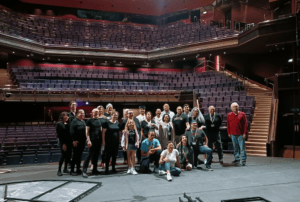
In the Photo: “We Are The Land” cast. Photo credit: Hartman Deetz.
Heartfelt, raw and poetic truths were told, with a backdrop of personal photos of community and family to emotional responses and applause from the audience and tribe members on stage, generating an atmosphere of connectedness breaking through the confines of the stage.
An Elder recounted both a terrible and beautifully triumphant lived history; there was a memorable, heart-wrenching testimony poetically expressing the trauma of losing family members to the violence of colonial institutional forces; whilst the youngest Wampanoag tribe member, a young girl, full of hope, carries the Wampanoag lineage across generations as the “Spring flowers.”
It was also made known that Wampanoag and Native American rights are still under relentless attack, with speakers bringing up former US President Donald Trump’s malicious but unsuccessful attempt to disestablish the Mashpee Wampanoag Tribe’s Reservation:
Paula Peters kindly lent her testimony to this article that left the audience weeping and cheering:
“As a second grader I was taught the history of my people in this way:
The teacher told us there was a ship, a large wooden ship called the Mayflower; that she sailed from Plymouth England in 1620 with 102 passengers bound for freedom in the New World. They were fleeing the tyranny of an oppressive king who would not allow them to worship as they pleased.
They sailed for three months on the open sea until they found a beautiful harbor in the new land and wonderfully cleared land to plant their colony. They called it Plymouth. But when they arrived they were cold and hungry and sick and dying.
And then the teacher told us, like a miracle from god, some Indians arrived and taught them how to hunt and fish and plant food and survive in the new world.
The teacher did not say the name of that tribe but in my young heart I knew she was talking about my people, the Wampanoag people and I was proud.
She said the Pilgrims were so grateful they celebrated their harvest with a thanksgiving and invited the friendly Indians to come and feast with them. And today in America, a thanksgiving being one of our most popular holidays is celebrated every year on the third Thursday of every November inspired by the kindness of those welcoming Indians.
With that, a boy in my class raised his hand and asked the teacher what happened to the Indians.
‘Well,’ she said, ‘Sadly they all died of a terrible plague.’
The heart in my 7-year-old chest sank but I raised my hand and waved it wildly.
‘No,’ I told her, ‘That can’t be true. They were Wampanoag. And I am Wampanoag. And I am still here!’
And it is something I have been proclaiming ever since.
I am Wampanoag. And I am still here.”
The play ended with the cast dancing on stage and singing, which Siobhan Brown describes as “a form of prayer … of looking within and a spiritual act and each song has a deep importance.”
In the Photo: We Are The Land program. Photo credit: Clare Dawson (article author).
An Invaluable Lesson in Allyship
Not only did the testimonial transformation fully, three dimensionally show the audience who the Wampanoag people are, but importantly it also showed the audience who we are.
The theatrical space, informed by the play’s context, forced us, the audience, to become a part of the story we have been avoiding outside of this space, and confront ourselves as descendants and beneficiaries of colonialism in the present day, face to face with those who pay the price.
Siobhan Brown underscores the importance of Western allyship:
“… and what it means to be a supporter of those who have had to function under systems that were put in place to erase us and to take an active part in helping to centre our voices and our place in our land … It’s important for those who learn, to take critical action and understand their power as an ally to indigenous voices. We want to be able to have a generation that doesn’t have to fight the federal government for our own land.”
As part of a set of speeches from the four #Mayflower400 nations, @SonkWaban speaks from her heart about the work that has gone into raising awareness of the shared history of the nations and confronting the difficult truths of the Mayflower story >>> https://t.co/oo3aDZVtT4 pic.twitter.com/BstA8WhyqC
— Mayflower 400 UK (@mayflower400uk) July 27, 2021
Aftershow Speeches
The message of allyship continued into speeches made by the Lord Mayor of Plymouth who reflects:
“I think it’s up to us now to think about how we’re going to weave what you’ve said into our future … it’s not about what we did any longer. It’s about what we do next.”
However, she notably avoided using the word, “colonialism” and defended the council’s decision to keep up the grand, commemorative statue erected in 1882, of historic 16th century voyager and slave trader, Sir Francis Drake, in the aftermath of the 2020 Black Lives Matter protests that called for its removal, explaining that it provides “historical context” to learn from past mistakes.
Following, in a gesture that was powerful to witness, considering how much South West England has taken from the Wampanoag, Hartman Deetz gifted the Lord Mayor with a piece of wampum jewellery, and delivered a speech that centred on colonisation as an “ongoing process” today:
“It’s a process of reducing everybody to commodity commodities, reducing our value to monetary gain, as well as the trees and the animals and everything else … As we see the systems of economics start to prey on each one of us, that same system [has] run out of foreign peoples to colonise and now is cannibalising itself.”
A Week With The Wampanoag Nation
Hartman continued this vitally important subject matter into the next Wampanoag Nation Takeover event, starting the week anew in his talk, “Colonisation and Its Impact,” that gripped the audience and moved us to consider how we can reform our habits of consumption and decolonise our ways of thinking and moving through the world.
The event later that night was held in The Drum auditorium, performed by the Wampanoag Nation Singers and Dancers in which the English audience were invited to join the troupe with a series of dances to the tune of live vocals and instruments, that centred on subjects of deep meaning to the Wampanoag.
Respects were paid through each performance to beings such as the mosquito, robin and other creatures of the Earth, with the stage becoming a celebration of the Earth’s community.
An example below is a calumet dance, a sacred offering to the tobacco plant, performed by the Wampanoag Nation Singers and Dancers in Massachusetts:
The next event was a film screening of the documentary called, The Mashpee Nine: The Beat Goes On, with a Q&A by Paula Peters, the filmmaker who also authored an accompanying book, “Mashpee Nine: A Story of Cultural Justice.”
The film traces in detail a pinnacle point in local Native and non-Native American relations, the latter of whom, only as recently as the 1960s-70s, imposed infrastructural colonisation on the yet relatively undisturbed Wampanoag tribal-occupied land of Mashpee. Tensions bubbled over as the Mashpee Wampanoag Tribe suffered from a colonist building boom.
A group of nine young Mashpee Wampanoag men, Willard F. “Billy” Pocknett, Kevin Hicks, Myron E. “Ricky” Hendricks, Victor P. “Streaker” Almeida, Brad Lopes, Martin E. “Bruzzy” Hendricks, Earl H. “Chiefy” Mills Jr, Harry “Sonny” Joseph and Lincoln Hendricks were partaking in a particularly significant powwow, a joyful cultural and spiritual celebration on tribal land, drumming and singing into the late night on the July 4 weekend in 1976.
However, on the grounds of ”excessive noise,” the men were brutalised and arrested by the police who were evidenced to be part of a government-funded, co-ordinated attack on Native and non-white communities across the US.
With the allyship of a skilled defence attorney, Lew Gurwitz, the Mashpee Nine were acquitted on all charges.
The trial attracted national interest after the national American Indian Movement became involved. Yet, court and police records were destroyed, and the historical event eventually faded in national and local memory.
“I saw the story fading away because the men who were involved, [are] not braggarts — they’re warriors,” says Paula, who made it her mission to recover and continue telling their story to keep the legacy of the Mashpee Nine alive, who are now tribal Elders, with Earl H. “Chiefy” Mills Jr recently having become the new chief, or Sontyum, of Mashpee.
Following the Mashpee Nine event, there was an enlightening talk on the Native Land Conservancy (NLC), the first Native-run land conservation group east of the Mississippi, with a Q&A by NLC board member and member of the Mashpee Wampanoag Tribe, Kitty Hendricks, joined by Paula Peters, communication and program coordinator and Jim Peters, executive director of the Massachusetts Commission on Indian Affairs and also a member of the Mashpee Wampanoag Tribe.
We also look to the example of Native-led organizations like Native Land Conservancy who are demonstrating real leadership in Indian Country by facilitating land transfers to support conservation efforts and cultural life ways of people on Wampanoag land. pic.twitter.com/Lh7g9OWqBi
— IllumiNative (@IllumiNative) July 22, 2022
Finally, the Wampanoag Nation Takeover closed out with a spectacular range of performances in “An Evening of Wampanoag Music and Spoken Word.”
The event included heartfelt, catchy and humorous contemporary folk songs composed and sung by Stephen Hendricks of the Mashpee Wampanoag Tribe, a stunning, electrifying fusion of saxophone jazz, hip-hop and Wampanoag music from Asa Peters of the Mashpee Wampanoag Tribe; lyrical, mesmeric songs sung beautifully by Jasmine Goodspeed of the Nipmuc Nation, and viscerally captivating spoken-word performances by Melvin “Mel” Coombs of the Mashpee Wampanoag Tribe.
Going Forward
Although over a month has passed since it happened, the Wampanoag Nation Takeover stays fresh in mind and heart.
It will forever be embedded in Plymouth and the UK’s memory, as a cherished part of our cultural history, with hope that we sow the seeds of the stories told and messages conveyed to us on and off stage, so that we can begin to grow a decolonised future, founded on responsibility and reciprocity.
Editor’s Note: The opinions expressed here by the authors are their own, not those of Impakter.com — In the Featured Photo: Wampanoag Nation Takeover Poster Featured Photo Credit: Theatre Royal Plymouth.


